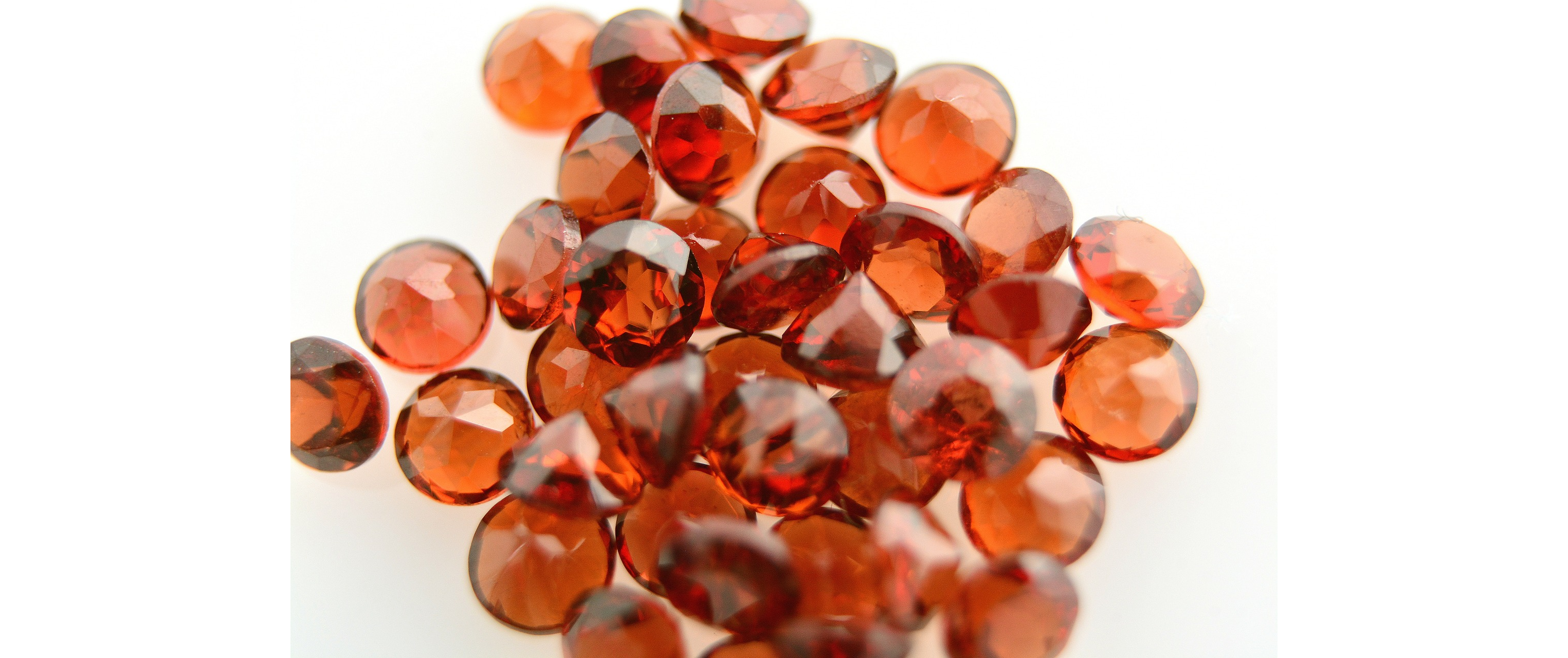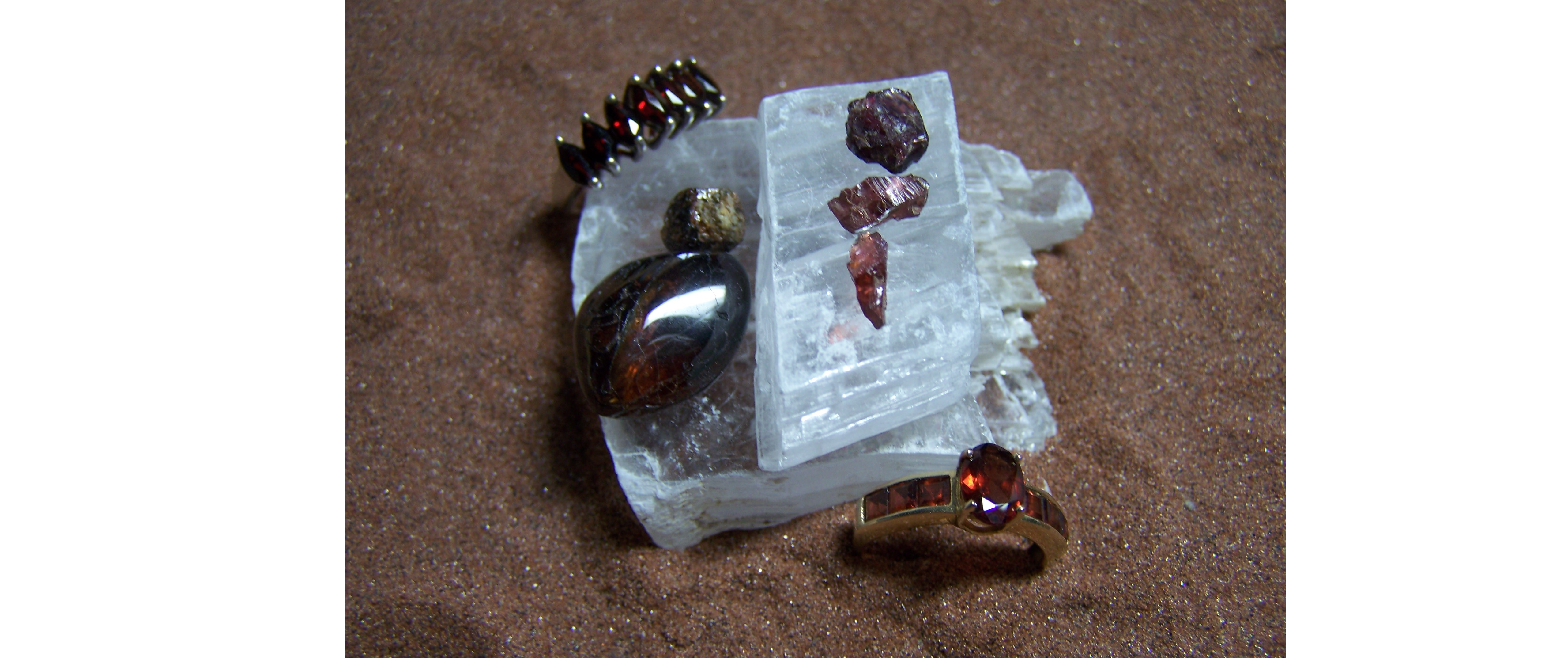JANUARY BIRTHSTONES




GARNET
Garnet comes from the Latin word “granatum” meaning “seed”. In Ancient times the term “carbuncle” was used to refer to red garnets as well as almost any other red stone. The Greek term for garnet was “nuktalopos” meaning “lamp stone”. The 14th century Middle English word “gernet” means “dark red”.
Garnet is the name of a mineral group that has the same crystal system but differing chemical composition. The mineral group includes almandine, pyrope, grossular, spessartine/spessartite, andradite, uvarovite, and tsavorite. It gets its colors from iron (red, reddish brown), manganese (orange, pink), aluminum (green), chromium (green), vanadium (green), and calcium (yellow) impurities. A mix of iron and chromium can result in a purple colored garnet. Garnet can also be colorless. Today, the most sought-after color of Garnet is the vivid green of the demantoid garnet. The most sought-after red variety of garnet is the almandine garnet. Garnets generally are not treated. Demantoid Garnet is rarely heat treated. The Moh’s hardness of Garnet is 6.5 to 7 to 7.5.
Garnet can be found in Africa, Sri Lanka, India, Madagascar, Russia, Germany, Greece, Pakistan, Brazil, Tanzania, Kenya, Canada, Czech Republic, and the United States of America (Idaho, California, North Carolina, Arizona, Colorado, New York, Wyoming). Bohemian garnet deposits were discovered around 1500 and contributed to their popularity in jewelry in Europe.
In 1912 the National Association of Jeweler’s made Garnet the birthstone for January. It is the stone for the 2nd and 29th Wedding Anniversaries. Garnet is associated with the zodiac signs of Aquarius, Taurus, Aries, Scorpio, and Leo.
The discovery of garnet can be dated to at least 3500 BC in Egypt. Garnet was discovered when a sealed Egyptian tomb was uncovered. Around 3100 BC the Egyptians used garnets as inlays for jewelry.
In Ancient Rome garnets were carved and worn in signet rings and were used to stamp the wax that secured important documents and to indicate one’s wealth and status.
Ancient Greeks believed that wearing a garnet around your neck would give you the ability to see in the dark. It also symbolized eternity and was regarded as a gift of love. Aristotle, a Greek philosopher (384BC – 322 BC), wrote about garnet saying, “The Garnet is a red gem, but not like the Ruby, its red is much more like that of a flame. If correctly cut and polished, it will reveal all its beauty and perfection.” Plato, a Greek philosopher, supposedly had his portrait engraved into a large garnet.
Garnet has historically been associated with eternity, love, faith, consistency, virtue, nobility, wealth, status, sincerity, good health, and protection from evil thoughts. It has been used to signify eternal friendship, trust, and loyalty.
Historically speaking, Garnet was believed to treat indigestion, sore throats, sadness, and protect against the plague.
Care:
Avoid steam cleaning. Ultrasonic cleaner is safe as long as there are no fractures in your garnet. Warm soapy water can be used.
